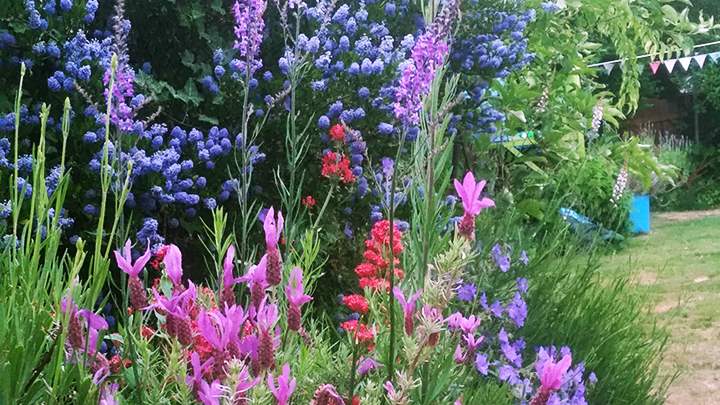
Gardening for carbon and wildlife
Together, the UK's gardens are larger than all of our National Nature Reserves combined, meaning they are a critical lifeline for wildlife, the environment and us. We have put together just a handful of ways you can make your garden a haven for wildlife whilst offsetting your carbon footprint.
Composting
Food accounts for over 30 per cent by weight of waste in the residual waste stream. By reducing food waste, composting helps to reduce greenhouse gas emissions that affect climate change. Proper composting of the organic waste we generate in our daily lives – inedible or unused food – can reduce the dependence on chemical fertilisers, help recover soil fertility, and improve water retention and the delivery of nutrients to plants.
Composting at home can help save you money, too. It can improve the health of your soil, increase the production in your garden and mean you have to spend less on bags of compost.
Avoid digging
Our soils hold a huge amount of carbon dioxide. Every time we dig we disturb the soil structure and release carbon into the atmosphere. Instead, suppress weeds through mulching, weeding by hand, and growing green manures. Keep that carbon in the ground!
Grow your lawn out
Cutting down on your mowing frequency can not only increase the biomass of your lawn and its natural ability to store carbon, but also reduces your use of electricity or fuel in your mower. Plus, it saves you time!
On top of this, an abundance of wildflowers and an increase in grass length can better support bees, butterflies and other insects that are so important to biodiversity. If you're not keen to commit to letting your whole lawn go wild, experiment with mowing paths and leaving patches to maintain the managed look.
Go for long life
Growing perennial rather than annual plants, or through more perennials into your garden, can decrease its carbon footprint. Perennials return or continue to grow year after year rather than needing to be replaced like annuals. Less disturbance of the soils and ecosystems that thrive there means less carbon released into the atmosphere, and offers benefits to wildlife too. Perennials' longer roots also allow them to hold onto moisture and carbon, making soil richer and giving it more structure.
Harvest rainwater
Turning on the mains tap has both a financial and a carbon cost. Rainwater is free! The best approach is reducing water usage as much as possible through mulching and carefully selecting plants, but when it comes to using water, rainwater wins.

